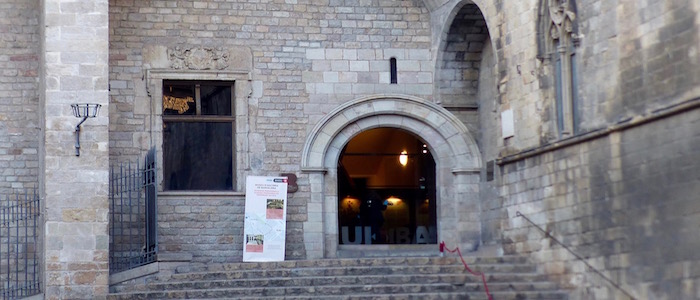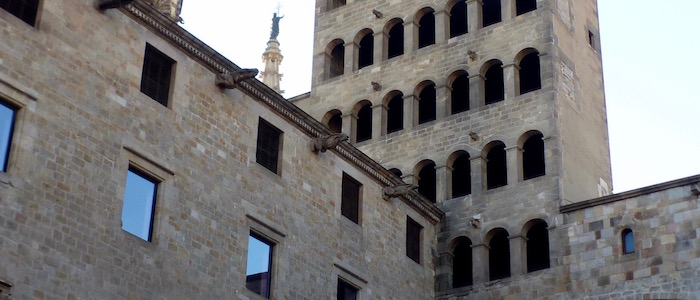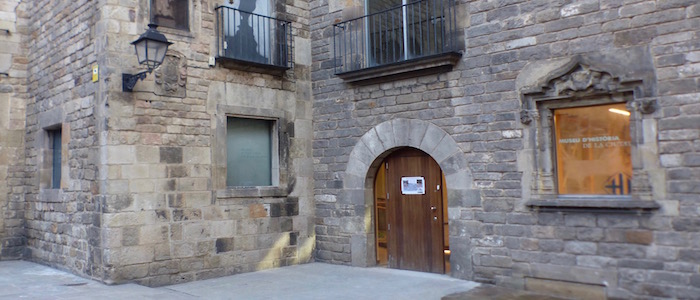
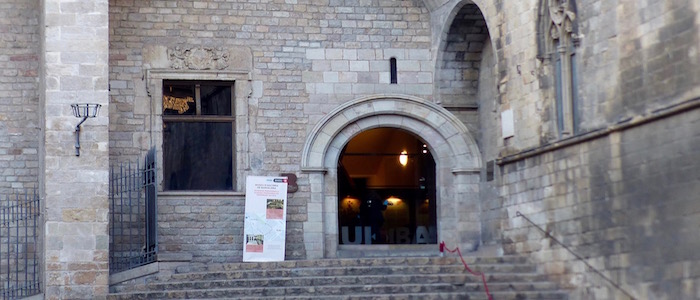
Point of interest (6) Plaça del Rei. In front of the Tinell Hall
We are in front of one of the entrances to the King’s Palace. As you know, in 1492 Christopher Columbus went to America. The kings of Spain helped the admiral in his adventure. When he returned from his trip, the kings welcomed the navigator in this Royal Palace in Barcelona in 1493. The stairs in the corner lead to the Tinell Hall.
Legend of Christopher Columbus.
Columbus was welcomed by the Catholic Kings in the Tinell Hall when he came back from his first trip to the Americas.
The king and queen, seated on their thrones and surrounded by the main figures from the court, received Columbus. They had a large chair brought in for him to sit before them; this action in those times was one of the greatest attentions that could be made by a king. Columbus explained many things about the lands that he had seen to the king and queen. He told them that the people did not know how to write or use money, that there was no bread or wine, that they did not know about iron, and that they had boats made of one piece in the shape of rafts.
He also explained to them that the people were naked, that they did not know our Lord God and that they ate each other. Not only that, but he asked them to try very strong spices used by the Indians that made the king and queen’s tongues itch as if they were on fire. He also made them eat potatoes, which they thought were very good, and he told them that the Americans ate them instead of bread. He showed them many parrots and birds that he brought back, of more than thirty different colours, and he also showed them some animals like small rabbits with rat tails.
The king and queen were astonished by all of this and obviously by the treasure of gold that Columbus brought them. Even the chains of the ships and caravels and the kitchen utensils were made of heavy carat gold. They were also surprised by the six Indians he brought with him, who were neither white, nor black nor red nor yellow-skinned, which until now were the colours they knew. But what amused the king and queen about the lands that Columbus had just discovered was learning that there were no horses or oxen, and that the largest animal there was like a dog, and that the Indians were surprised when they saw people riding horses, because they did not understand that they were two different bodies; they thought it was a single person who was half-human, half-animal; they were horrified to see them.
Columbus explained to the king and queen that the world was round, and to help them understand, he showed them a ball as an example and rolled it several times before the king and queen. As the king did not understand these things, he called Ferrer de Blanes, on the Costa Brava. Ferrer was a great navigator and had recently discovered the Canary Islands and explored the African coasts reaching Guinea, so Columbus could explain to Ferrer that the world was round. He immediately understood Columbus’ explanations because he was very knowledgeable about oceans.
The king and queen and the entire court found it difficult to understand that the world was as round as a ball, and so, to clarify it, the king called the entire court and all the wise people of that time.
Columbus explained it to them in detail and convinced them. However, envy betrayed them when they realised that Columbus was wiser than them, and they asked him how he had discovered that the world was round and that beyond it there must be land. Columbus told them that the entire sea had to be surrounded by land to hold the water, otherwise the water would not be contained and it would overflow. Everyone laughed and said that even children could understand that, so he didn’t have much merit, and he shouldn’t pretend to be wise.
An angry Columbus told them that all difficult things, once discovered, were easy. If it were so simple, and they were so wise, why had they not done it before? At that point, Columbus proposed them a challenge: to see who could make an egg stand upright on its tip. Immediately afterwards, he had an egg brought in. All those present tried several times to make the egg stand upright, unsuccessfully. When Columbus saw that no one was able to do it, he picked up the egg, placed it on the table and tapped it lightly to flatten the tip and the egg stood perfectly. With great admiration, they recognised how clever and wise Columbus was. From this experience, to describe a brilliant discovery that seems simple after the fact, we say: it’s like Columbus’ egg.
Category: Barcelona walking Tags:
Contact and Booking
Mobile: +34649970408 pere.sauret10@gmail.com
Experiences
Hiking Walking Rock-climbing
Donate
Copyright © 2025 · All Rights Reserved · BarcelonaWalking Barcelona Hiking Barcelona Montserrat Costa Brava Pyrenees
Adventure Theme by Organic Themes · WordPress Hosting · RSS Feed · Log in
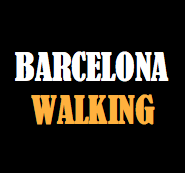 BarcelonaWalking Barcelona Hiking Barcelona Montserrat Costa Brava Pyrenees
BarcelonaWalking Barcelona Hiking Barcelona Montserrat Costa Brava Pyrenees